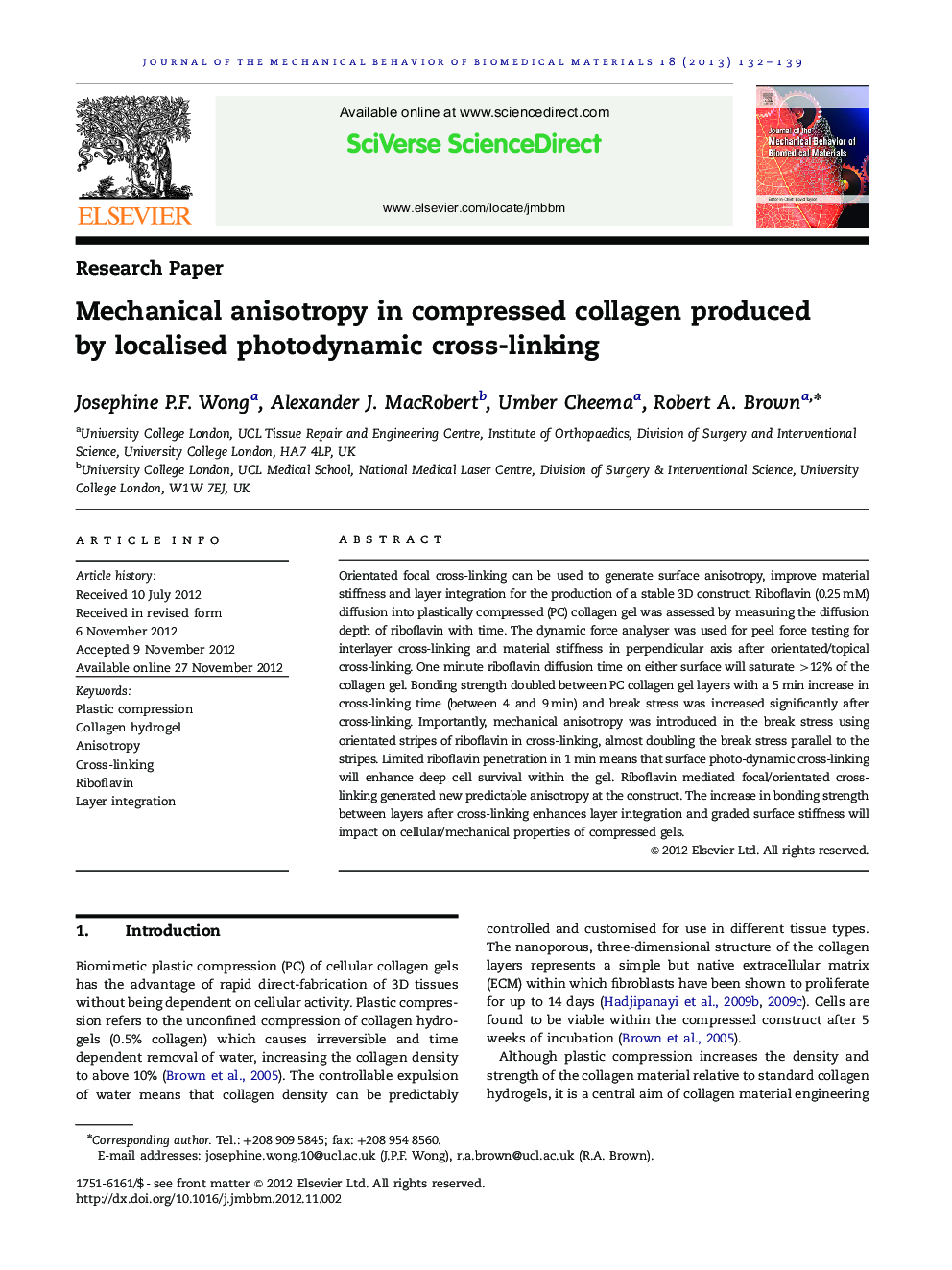| Article ID | Journal | Published Year | Pages | File Type |
|---|---|---|---|---|
| 811030 | Journal of the Mechanical Behavior of Biomedical Materials | 2013 | 8 Pages |
Orientated focal cross-linking can be used to generate surface anisotropy, improve material stiffness and layer integration for the production of a stable 3D construct. Riboflavin (0.25 mM) diffusion into plastically compressed (PC) collagen gel was assessed by measuring the diffusion depth of riboflavin with time. The dynamic force analyser was used for peel force testing for interlayer cross-linking and material stiffness in perpendicular axis after orientated/topical cross-linking. One minute riboflavin diffusion time on either surface will saturate >12% of the collagen gel. Bonding strength doubled between PC collagen gel layers with a 5 min increase in cross-linking time (between 4 and 9 min) and break stress was increased significantly after cross-linking. Importantly, mechanical anisotropy was introduced in the break stress using orientated stripes of riboflavin in cross-linking, almost doubling the break stress parallel to the stripes. Limited riboflavin penetration in 1 min means that surface photo-dynamic cross-linking will enhance deep cell survival within the gel. Riboflavin mediated focal/orientated cross-linking generated new predictable anisotropy at the construct. The increase in bonding strength between layers after cross-linking enhances layer integration and graded surface stiffness will impact on cellular/mechanical properties of compressed gels.
Graphical abstractFigure optionsDownload full-size imageDownload high-quality image (195 K)Download as PowerPoint slideHighlights► Topical surface application of photosensitiser (riboflavin) – localised to interfaces. ► Compressed collagen layer integration by photodynamic cross-linking. ► Generation of mechanical anisotropy by topical and orientated cross-linking.
